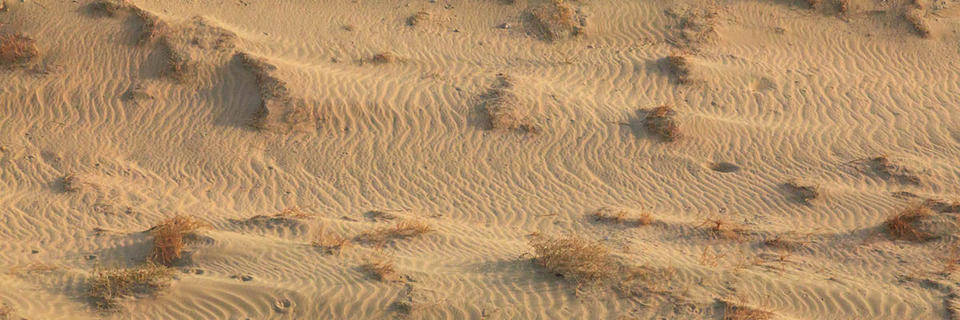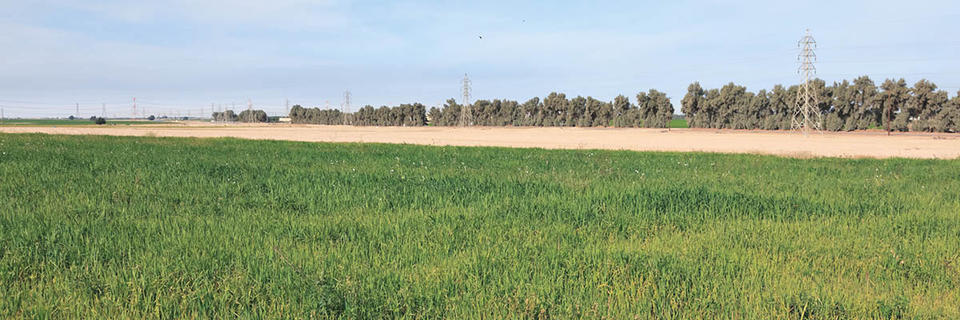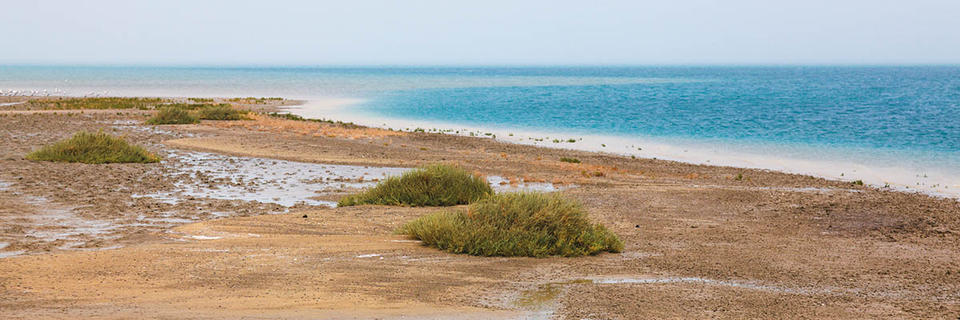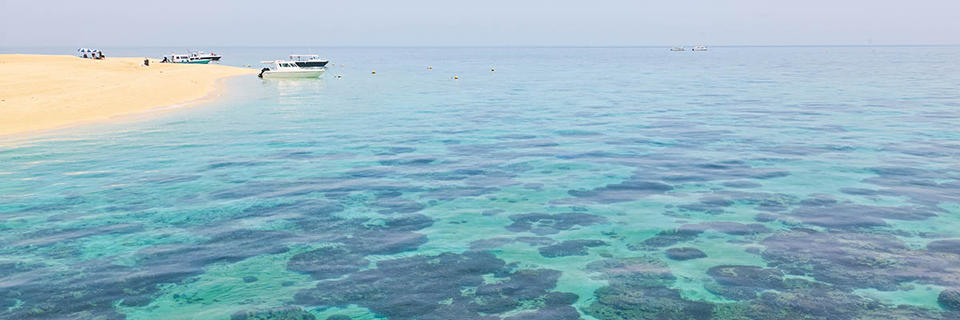Desert & Semi-desert
Most of Kuwait is desert, semi-desert and rough steppe. Inland, Kuwait’s desert rises gently into a vast plateau reaching an elevation of about 300 meters near the Saudi Arabian border. Steppe originally covered larger areas and was dominated by low grasses and low bushes adapted to live in the arid conditions. Usually the landscape is nearly completely flat - almost featureless to the human eye. Where the landscape has some undulations or rocky features such as wadis, escarpments and rock outcrops wildlife is attracted by the shelter, cover, and foraging sites. Yet these landscapes are alive and dynamic. Most coastal and northern parts of the country have steppe grasslands that flourish and flower during the wet season. Although true wilderness areas are limited and mostly on the borders, a few areas stand out.
Farmland & Settlements
A new kind of oasis in the desert is artificially-irrigated farmland. In some cases the sheer size and variety of the greenery here is remarkable – huge pivot fields and fruit-tree orchards, often include “woodland-like” windbreaks and other tree plantations. Irrigated farmland has expanded as have settlements. Kuwait City, the country’s largest conurbation has many parks and green spaces, especially along the shoreline. These green spaces attract many migratory birds.
Wetlands
Any place wet enough to develop distinctive wetland vegetation, be it marine, brackish or freshwater is really a bonanza for wildlife in a desert land. Even artificial wetland features become oases – these include small farm ponds, sewage outfalls and wastewater treatment areas. Marine tidal wetland areas and saltmarshes in the Mesopotamian Delta –of which Bubiyan and Kuwait Bay are part– create extremely important wildlife habitat areas in Kuwait. Kuwait Bay alone hosts some of the most extensive mudflats in the entire Arabian Gulf. Kuwait Bay is a wetland of outstanding international value for birds; and this is why so many birds are so easily visible so close to Kuwait City.
Arabian Gulf
The Arabian Gulf is a subtropical arm of the Indian Ocean. Kuwait’s waters lie on the western edge of the rather shallow Mesopotamian Shelf at the extreme northern part of the Gulf. The anticlockwise flow of the Gulf’s currents favors Kuwait by carrying nutrients from the vast tidal estuary of the Tigris-Euphrates-Karun rivers, resulting in a remarkably bountiful sea and shoreline environment. A tidal range of 2 to 3 meters along these shores creates remarkable intertidal zones. Important coral reefs and some tiny offshore islets and sandbars mostly in the southern part of Kuwait's Gulf Coast complete this diverse marine kaleidoscope.





